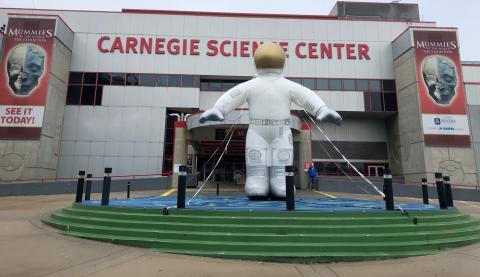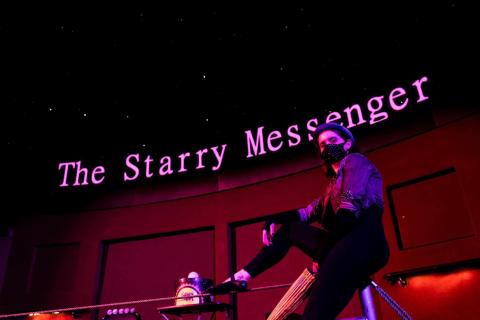Space Out Astronomy Weekend is Carnegie Science Center’s annual celebration of all things astronomy. The two-day event typically draws about 5,000 visitors from the Pittsburgh region to learn about the solar system in the Buhl Planetarium, engage with local astronomy and model rocket clubs, and hear presentations from astronomy professors and other experts. It’s also when we make great use of the NISE Network’s Explore Science: Earth & Space toolkits. But what was originally intended to be a blowout weekend celebrating the reopening of our planetarium after a months-long upgrade turned out to be a quiet, thoughtful event for almost 1,300 astronomy lovers.

Before going into details on this year’s event, it’s worth noting that Carnegie Science Center has strong visitor safety guidelines in place during the Covid-19 pandemic. We have limited our attendance to no more than 10% of our building’s capacity to ensure that each family or social group has room to maintain distance from other visitors. The capacity of the Buhl Planetarium was decreased from about 150 to 30 and all seats are cleaned after each show. We also decided to staff this event 100% internally instead of relying on community partners like clubs and universities; that way we could ensure that all presenters were trained on our safety procedures.
One of the reasons we love the NISE Net toolkits is that they are highly hands-on…which is the first problem we had to solve. We converted some of our favorite activities into low- or no-touch experiences that were more brains-on than hands-on. Games like Space Guess Quest and Mission to Space were easy enough to adapt by allowing our presenters to move the pieces while still giving families the opportunity to play and explore together. Star Formation and Bear’s Shadow also proved to fit the bill with some minor modifications.
The second problem we had to solve was our diminished capacity in the Buhl Planetarium—how could we satisfy our visitors’ expectations for learning about space if they couldn’t get into the dome? One solution was to bring our traveling science show SolarQuest off the road and onsite for our event. In SolarQuest, audiences learn about NASA’s Solar Dynamics Observatory and the relationship between the Sun and Earth through large-scale demonstrations. We also featured two pop-up shows throughout the day. Our Cosmic Chemistry shows entertained guests who didn’t get into the planetarium. And one of our planetarium educators/circus performers brought her very own show called The Starry Messenger, which uses juggling, humor, and movement to teach children about our solar system and the stars beyond it.

We pride ourselves on our safety procedures and the fact that our visitors feel safe returning to us. And while this year’s Space Out Astronomy Weekend may not have been the spectacle that our community has come to expect from us, those that chose to visit were able to enjoy the day without crowds and got a memorable experience for their families.
To learn more about Carnegie Science Center's Space Out Astronomy Weekend, contact Mike Hennessy at HennessyM@CarnegieScienceCenter.Org.
